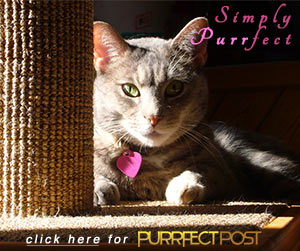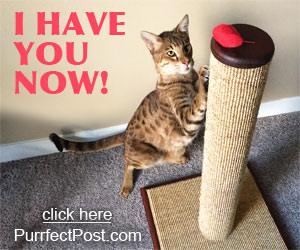Do Cats Have a Sense of Taste?
 We think of cats as having extremely fine-tuned and heightened senses compared to our own. They can jump, twist, run, hear, smell, and see better than we would ever hope to.
We think of cats as having extremely fine-tuned and heightened senses compared to our own. They can jump, twist, run, hear, smell, and see better than we would ever hope to.
With that in mind, it may be surprising to learn that humans have approximately 9,000 taste buds on their tongues compared to the paltry 470 that a cat has. Yikes, does that mean they can hardly taste anything?
Well, yes and no. Maybe. We can ask the cat all day long, but he’s not talking!
Cats and Tasting
Here are some things we think we know about cats' sense of taste:
- The sense of smell is extremely important in attracting cats (and us) to food and also in aiding tasting food. Cats' noses are many times more sensitive than our own, so it is believed that their heightened sense of smell assists a great deal in their tasting of different flavors.
- In addition to the sense of smell that is similar to our own, cats have what might be described as an auxiliary sense. The roof of a cat’s mouth contains a biological structure called the Jacobson’s organ. It connects the mouth to the nasal passage. It is believed that animals with this organ (cats, dogs, mice, horses, elephants, goats, cattle, pigs, lizards, snakes, and some monkeys) use it to "taste-smell" aromas around them such as food and pheromones. Odors are inhaled to the tongue, the lip is slightly curled, and the tongue is rubbed on the roof of the mouth. Then the mouth, nose, and Jacobson’s organ in some way allow the animal to sense the essence of the flavor and scent in a way that we do not have the capacity to experience. You can see it in action here: "Flehmen Response in Cats: VIDEO."
- Humans have taste buds that distinguish sweet, sour, bitter, salty, and meaty/savory (umami). Cats have taste buds like our own; however, their sweet buds are not very reactive.
- Cats are obligate carnivores and driven to consume meat. They do not need to eat sugar or carbohydrates (that turn to sugar), thus there is no reason for them to have a taste for it . . . or a sweet tooth, if you will. Essentially, the taste receptors that react to meat and the fats contained therein, are what drive a cat’s appetite.
- Many people say they have cats that are attracted to candy, ice cream, pudding, etc. They are sure their cat loves sweets, but it is probably the fat content of the food that they are drawn to. Cats are easily able to detect fat.
- The bitter and sour taste sensors are important in that they warn a cat of harmful and/or poisonous foods or objects.
- Over the years, cats' aversion to bitter tastes has been duly noted and elaborated with the development of such products as bitter apple spray. This bitter tasting liquid is used to dissuade a cat from licking and chewing on wounds, furniture, bandaging, etc., and it is a helpful training tool.
- Almost all cats have preferences for the consistency of food. In kibble-type food, large pieces are by far preferred over crumbs. Soft food is usually preferred over hard food.
- Food temperature is also important to a cat, with preferences usually toward warmer food, approximately 100 degrees Fahrenheit, which simulates the temperature of freshly killed prey. Most cats will reject a cold dish of food just taken from a refrigerator.
- It also seems that the shape of food is important to cats. Many cats show much more interest in kibbles when the shapes vary from day to day or week to week.
With all of the felines' group and individual preferences, it is not hard to see why they have a reputation for being a bit finicky.
You May Also Like These Articles:
Why Do Some Cats Have Two Different Colored Eyes?
Wet Food vs. Dry Food For Cats
Notice: Ask-a-Vet is an affiliated service for those who wish to speak with a veterinary professional about their pet's specific condition. Initially, a bot will ask questions to determine the general nature of your concern. Then, you will be transferred to a human. There is a charge for the service if you choose to connect to a veterinarian. Ask-a-Vet is not manned by the staff or owners of CatHealth.com, and the advice given should not delay or replace a visit to your veterinarian.





